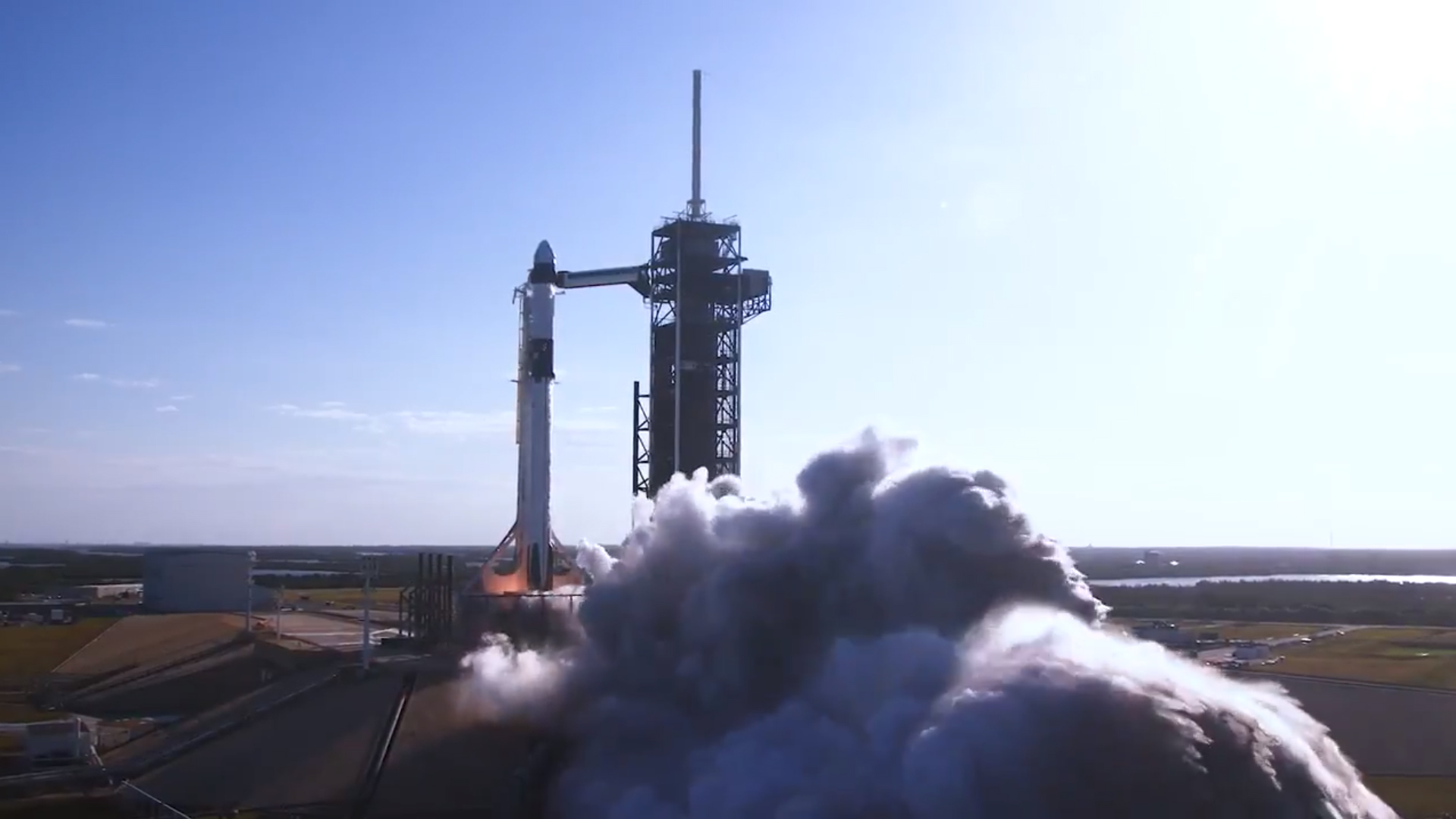SpaceX Test Fires Rocket for 1st Crew Dragon Launch in February
SpaceX has fired up the rocket that will launch its first Dragon spacecraft built for astronauts on an uncrewed test flight next month.
The Falcon 9 rocket carrying the new spacecraft, called Crew Dragon, ignited its nine first-stage engines briefly on Thursday (Jan. 24) as it stood atop the historic Launch Pad 39A of NASA's Kennedy Space Center in Cape Canaveral, Florida.
"Static fire test complete — targeting February launch from historic Launch Complex 39A for Crew Dragon's first demonstration flight!" SpaceX representatives said in an update on Twitter. [Take a Walk Through SpaceX's Crew Dragon]
SpaceX is targeting a February launch for the Crew Dragon's debut, but has not officially announced a target launch date. A Spaceflight Now report citing unnamed SpaceX and NASA managers stated that the mission could fly no earlier than Feb. 23. SpaceX and NASA initially aimed to launch the Demo-1 flight in January, but pushed back the launch to February due to schedule issues and the need for extra hardware checks.
While Demo-1 will be the first test of SpaceX's human-rated Crew Dragon spacecraft, the company has been flying robotic Dragon cargo ships to the International Space Station since 2012 to deliver NASA supplies. The new Crew Dragon includes life support systems, a launch escape system, solar panels built into the capsule's "trunk" service module and other advancements over its predecessor.
Elon Musk, SpaceX's CEO and founder, said in a Twitter post that the first Crew Dragon to carry astronauts could launch this summer if all goes well with the upcoming test flight. SpaceX also plans to perform an in-flight abort test before its crewed flight.
NASA awarded SpaceX a $2.6 billion contract to build a crewed version of Dragon (which SpaceX intially called Dragon 2) in 2014. Boeing recieved a separate NASA contract for $4.2 billion to develop its crewed CST-100 Starliner vehicle to fly astronauts for NASA. Both companies are expected to launch their first crewed flights later this year.
Breaking space news, the latest updates on rocket launches, skywatching events and more!
Email Tariq Malik at tmalik@space.com or follow him @tariqjmalik. Follow us @Spacedotcom and Facebook. Original story on Space.com.

Tariq is the award-winning Editor-in-Chief of Space.com and joined the team in 2001. He covers human spaceflight, as well as skywatching and entertainment. He became Space.com's Editor-in-Chief in 2019. Before joining Space.com, Tariq was a staff reporter for The Los Angeles Times covering education and city beats in La Habra, Fullerton and Huntington Beach. He's a recipient of the 2022 Harry Kolcum Award for excellence in space reporting and the 2025 Space Pioneer Award from the National Space Society. He is an Eagle Scout and Space Camp alum with journalism degrees from the USC and NYU. You can find Tariq at Space.com and as the co-host to the This Week In Space podcast on the TWiT network. To see his latest project, you can follow Tariq on Twitter @tariqjmalik.

